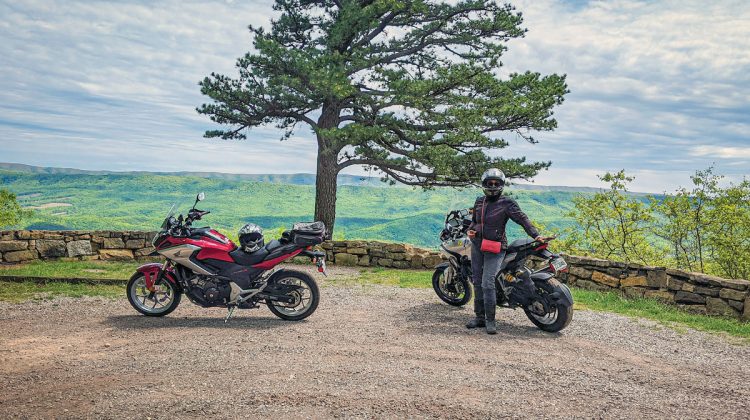
I am fortunate enough to live in Southwest Virginia, where great motorcycling roads surround me, so I thought it would be fun to explore my backyard with a St. Paddy’s Day cloverleaf of four loops to the southeast, southwest, northeast and northwest of sister towns Blacksburg and Christiansburg in Montgomery County, just west of Roanoke.
Blacksburg has 45,000 residents but it’s size is deceiving. It is a college town where Virginia Tech has 36,000 students, and indeed Tech dominates the area economically and demographically.
My beloved home of 34 years, Blacksburg holds a student energy that is palpable. The town pulses with the seasons of the university, calm in the summer and bustling in the fall and spring with football season in the former and graduation in the latter. With Tech’s dominance, my guess is the townspeople possess the highest average IQ per capita in the state and every neighborhood has its share of PhDs. There is pioneering research ongoing in a vast array of technologies, including wireless, satellites, health, drones, agriculture, transportation and the environment. In 2007, Virginia Tech Transportation Institute founded the Motorcycle Research Group and has become an internationally recognized leader in the study and promotion of real-world motorcycling safety.
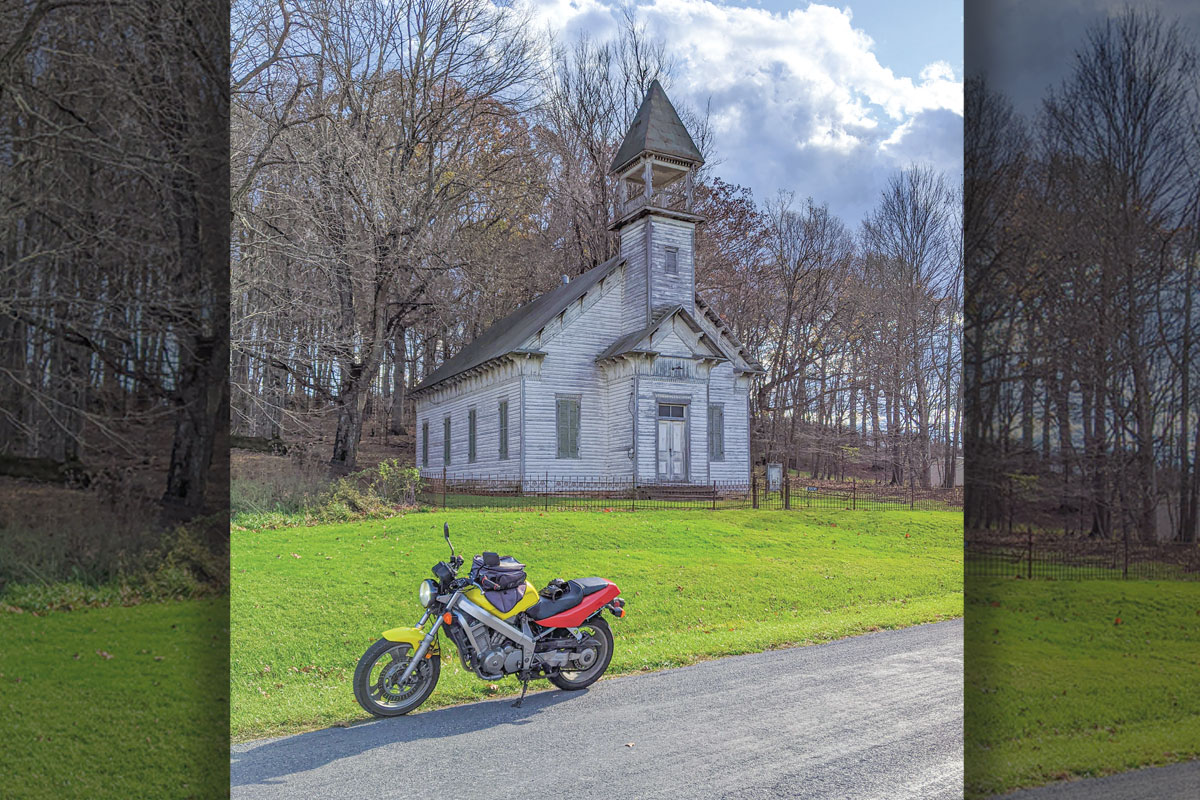
Surprisingly cosmopolitan and polyglot for such a rural place, think of Blacksburg as a bastion of popular culture amidst the bleakest of the boonies. But for us motorcyclist, the boonies are all good.
Eight miles away is Christiansburg, the county seat, my hometown, and a regional hub of transportation, industry, retailing, health care, government and distribution. With a population of around 25,000, it was chartered in 1792 and has served as the seat of government since.
Geographically, both Blacksburg and Christiansburg are nominally at 2,100 feet of elevation and straddle the Eastern Continental Divide, its waters headed eastward via the Roanoke River and to North Carolina’s Albermarle Sound and the Atlantic Ocean and westward via the New, Kanawha, Ohio and Mississippi rivers to the Gulf of Mexico.
•••
Begin your visit with leg one of the cloverleaf, the Northeast Loop to head due east down the divide to Ellett Valley and along bucolic Catawba Road, where you’ll share the road with bicyclists (and maybe a stray cow) on the Bikecentennial Route, now Bicycle Route 76, stretching from Yorktown to Colorado.
At Catawba, take Route 311 north — watch for police patrols — to the town of New Castle, in Craig, one of Virginia’s zero traffic light counties. Continue on to Paint Bank where you’ll enjoy lunch at the fun and funky Swinging Bridge Restaurant, featuring buffalo burgers from the store’s own buffalo farm. Head out back to the large yard where you can play some corn-hole, search for four-leaf clovers, or tour the picturesque Tingler’s Mill.
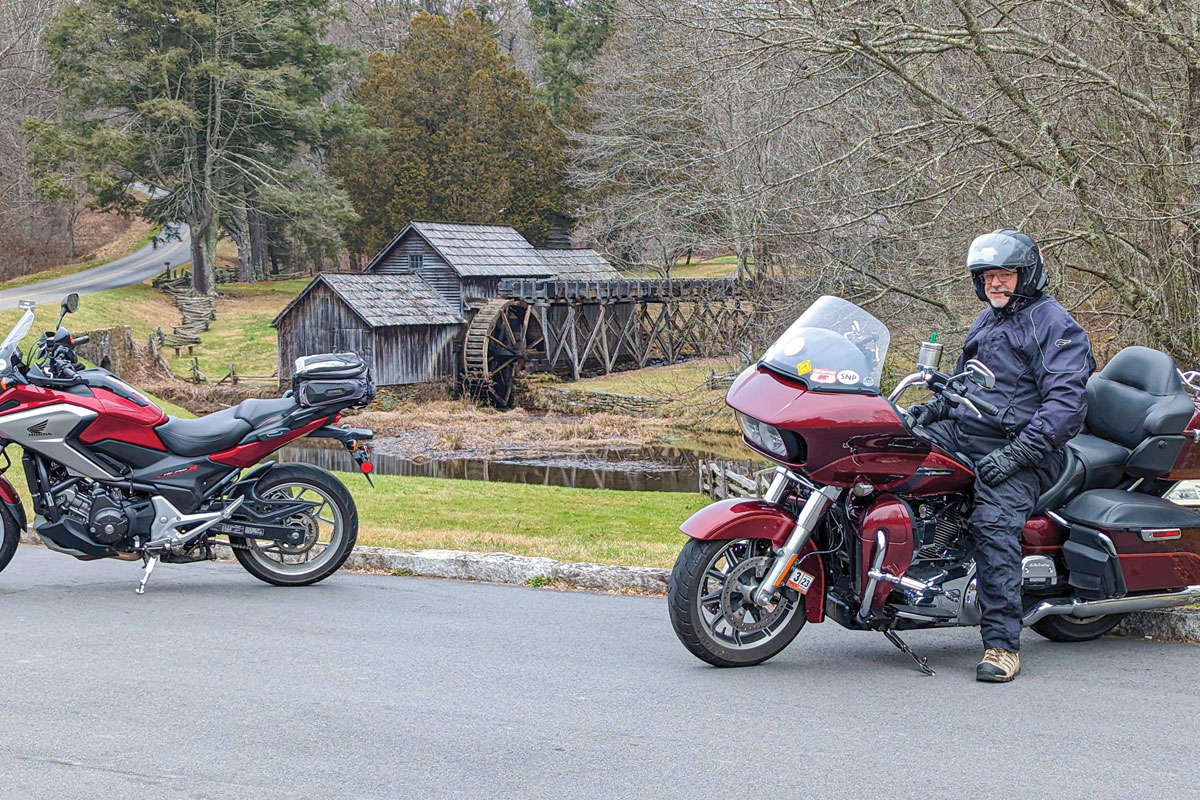
On your way, you’ll cross spectacular Potts Mountain, elevation 3,450 at the gap, over the most thrilling road this side of the Back of the Dragon. Take an extra half-hour before heading back to Blacksburg by continuing northward into West Virginia over Peters Mountain, where Route 311 is almost equally fun and challenging.
At the bottom on the other side before making your U-turn, take a glimpse at the grand and historic Sweet Springs Resort, a standing relic of the days of yore when vacationers made the summer rounds of Virginia’s and West Virginia’s mineral springs resorts, escaping the stifling heat of the Tidewater.
Once back in Paint Bank, take Potts Creek Road southwestward, first on VA 600, then WV 17, and then VA 635 that crosses the state line twice. Along the way, you’ll see bison grazing in the fields destined for someone else’s burger to come. If you have more time and brought your hiking shoes along, ascend back up Peters Mountain from Waiteville and take the 1.5-mile walk to the Hanging Rock Raptor Observatory and look for migrating hawks and eagles, or the Potts Creek Rail-Trail from the small village, which is so remote I guarantee you’ll have it to yourself — I’ve never seen anyone else on it.
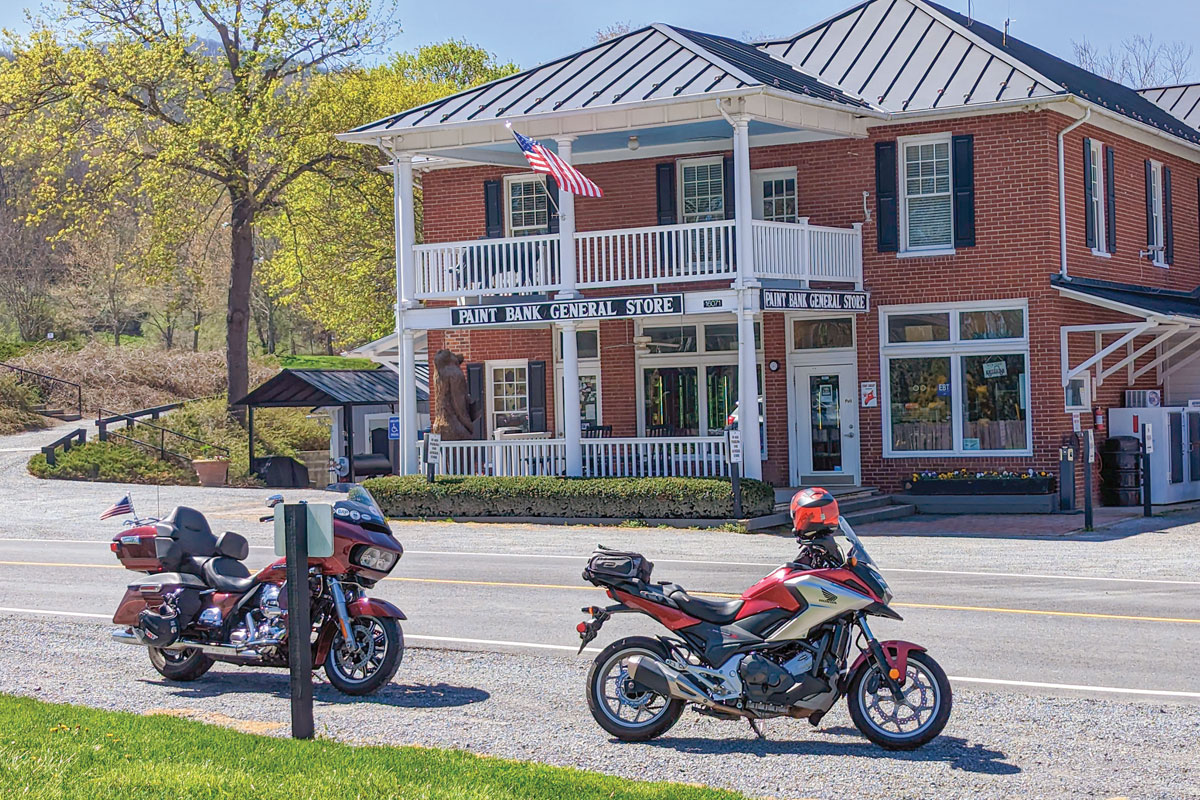
If you were too early for lunch in Paint Bank, your ride will take you back to U.S. 460 in Pembroke where you can catch a great meal at the Riviera Mexican Grill. Just like that, you’re back in Blacksburg where a tour through Virginia Tech’s stunning Gothic campus and its iconic Burruss Hall overlooking the Drill Field are mandatory. And then back to the Eastern Divide Brewery.
•••
On the next loop of your four-leaf clover ride, head west from Blacksburg using Prices Fork and Peppers Ferry Roads to U.S. 11, then to Dublin and Pulaski, where you’ll need to stop at The Raymond F. Ratcliffe Transportation Museum and see its impressive collection of industrial equipment from the town’s past and marvel at the O-gauge model railroad display of the town circa 1950 capturing the town’s mid-century vibrancy and charm.
Then things get exciting, as your clockwise route takes you to Robinson Tract and its climb over first Little Walker and then Big Walker Mountains, the latter being especially harrowing. Think of it as the Appalachian Trail with pavement, and only marginally, with multiple Stelvio-like tornanti.
Speaking of the AT, as you continue to the northwest through Mechanicsburg, Holly Brook, South Gap and then to Rocky Gap, you’ll cross that revered trail and wave at through-hikers. Route 61 from Rocky Gap alongside Wolf Creek into Narrows is loved by area bicyclists as it’s literally the only 20-mile stretch of flat road in the region.
If you’re hungry, stop and enjoy a salmon fillet at Tidal Wave Seafood in downtown Narrows or a barbeque sandwich and pinto beans at the Happy Hog in historic Pearisburg across from its crimson-painted Giles County Courthouse before taking highway U.S. 460 back into Blacksburg.
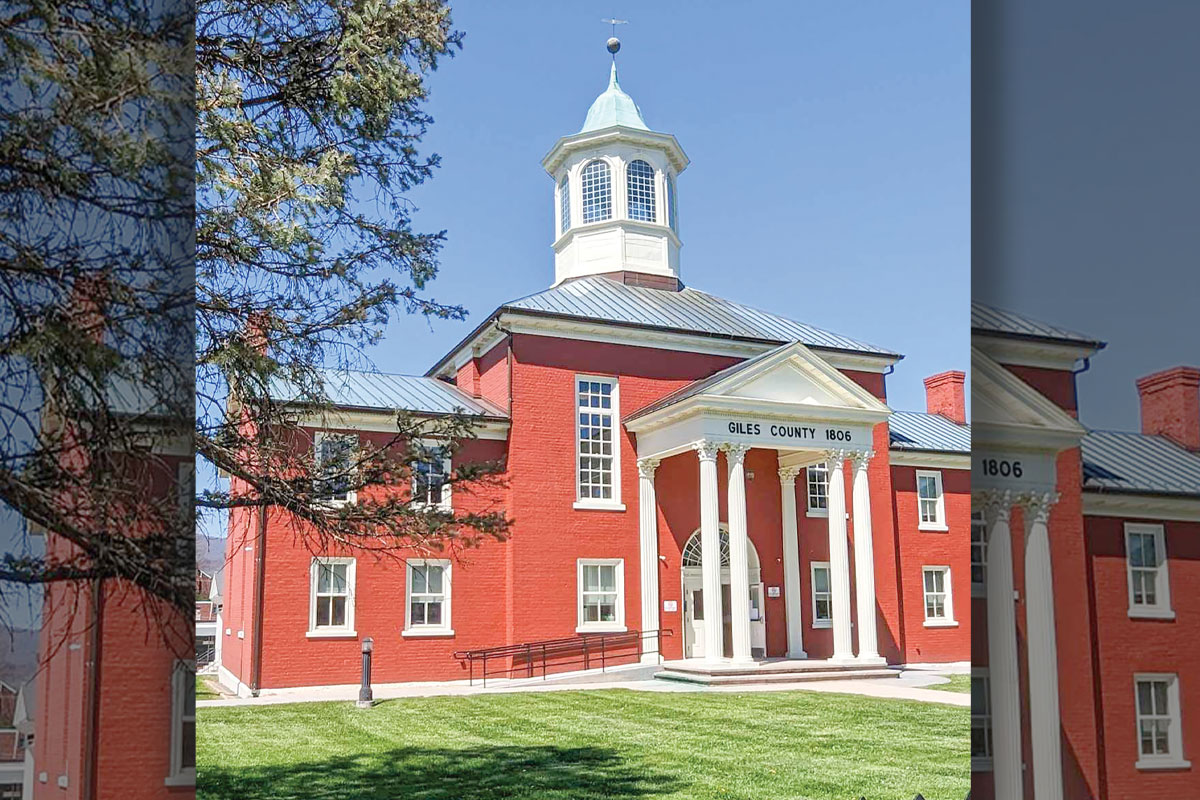
Once back in the ‘Burgs, make your way to Christiansburg via the bustling mid-county commercial district into the quiet neighborhood of Cambria where you’ll experience the town’s railroad heritage. Although there is no passenger service now — it has been planned for an Amtrak extension from Roanoke for years and may happen “soon” — Cambria has not one but two historic stations along the mainline of the Norfolk-Southern, formerly Norfolk &Western. The older was built by the Virginia and Tennessee in the Tuscan Italianiate style during rebuilding process after the Civil War after the Union forces destroyed the original in 1854. The “new” station was built 1906 and remained in service until N&W pulled the plug on passenger service in the 1960s, and it is slated for renovation and reuse when Amtrak finally arrives.
Christiansburg’s long-serving mayor, Mike Barber, who I’ve known since our days at Christiansburg High School, said Christiansburg, with its 17-18 hotels and 60-70 restaurants is the perfect jumping-off location.
“The downtown is beautiful. It’s landscaped and clean. We have parks and playgrounds for the kids. We’re not known for our Civil War or Revolutionary War history, but we do have arts, recreation, nature. It’s accessible from the Interstate (81). It’s a great place to visit,” he said.
If you are a history buff, you’ll learn that downtown Christiansburg was the site of the last legal duel in the state that left both its participants, Thomas Lewis and John McHenry, dead of rifle wounds. The attending physician, Dr. John Floyd, later became governor and lent his name to the town of Floyd you just visited. You wouldn’t have wanted to be Floyd that day: “Yup, he’s dead. Yup, he’s dead, too.”
•••
Start your southeast loop at The Montgomery Museum of History and Art in a renovated bank building on Christiansburg’s central square where you can learn about the County’s artistic, industrial, educational, and economic history.
Head out of town eastbound on old U.S. 11, the Wilderness Road, toward Roanoke where you’ll leave the highway in Shawsville, with impressive Poor Mountain dominating the eastern skyline. Take Allegheny Springs road through a narrow canyon to Copper Hill and then Adney Gap where you’ll reach the Blue Ridge Parkway.
Continue south down the escarpment to Callaway and then Ferrum where you’ll tour Ferrum College’s famous Vaughn Chapel. Shaped from above like a Fairy Stone, the unique cross-shaped stone crystals found in the area, it has large stained-glass windows that on sunny days cast colorful beams across the pews. Nearby, visit the Blue Ridge Institute & Museum, highlighting the region’s rich Appalachian culture and music. The fairground across the highway is a great place for your next four-leaf-clover search!
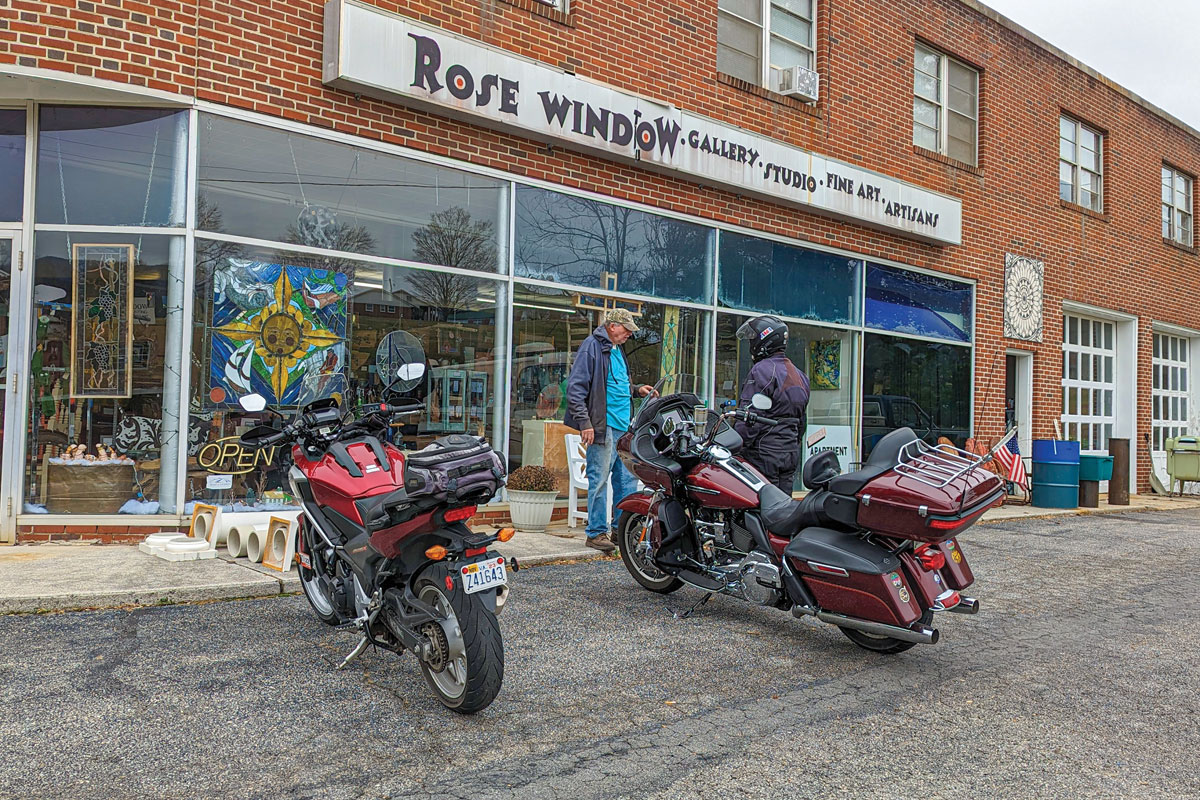
Back aboard your two-wheeled steed, you’ll catch one of our area’s true gems, Route 40 with its 17 miles of fast, wonderful curves over to Woolwine, all on the bottom slope of the Blue Ridge. Stop in at my friend Amanda’s Rose Stained Glass Studio and purchase a gift for your significant other — tell her I sent you.
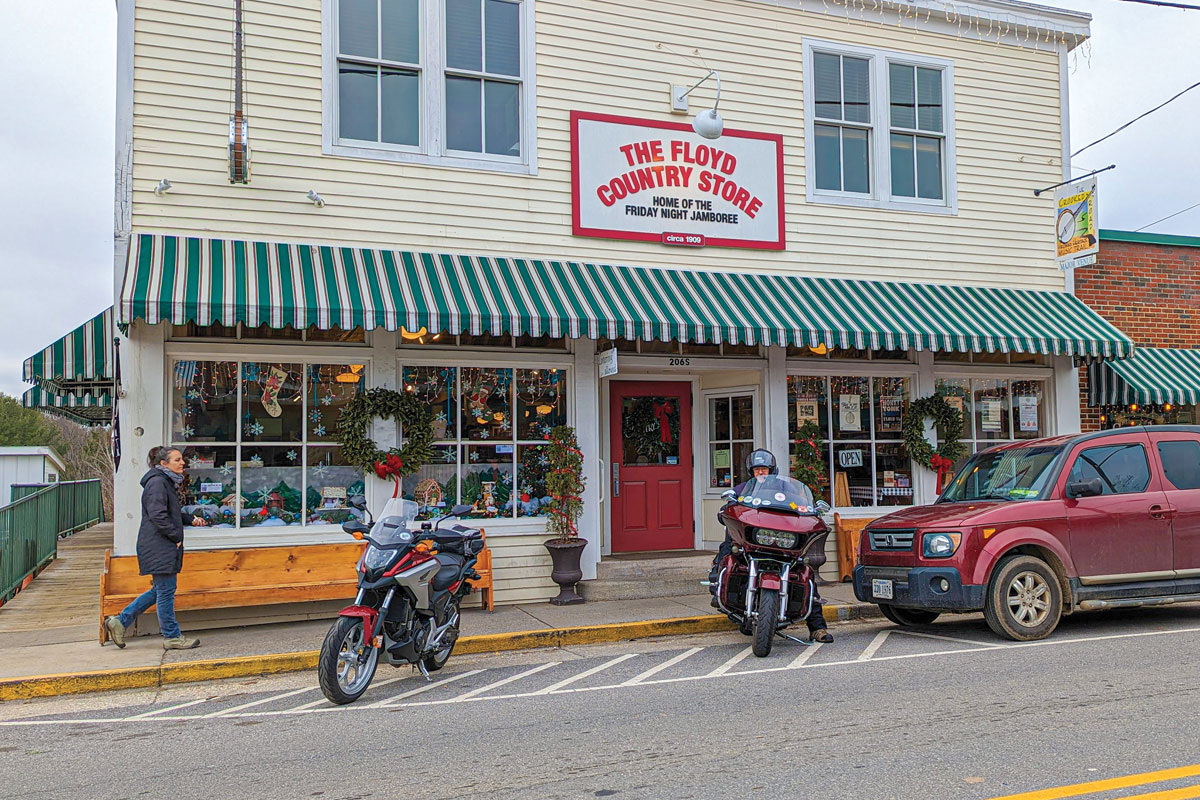
Curvy and thrilling, SR8 northbound will take you back to the Parkway at Tuggle Gap where you’ll want to stop at the newly renovated Tuggle’s Gap (Note: it’s “Tuggle” on the state map and “Tuggle’s” to the locals.) Roadside Inn and Restaurant. Then head into Floyd where you can visit the historic Floyd Country Store or stay at the nearby Hotel Floyd. Arrive on a Friday night and you’ll experience the world-famous Friday Night Jamboree of traditional Appalachian music and dance in the Store where they operate on “Granny’s Rules” — no smokin’, no drinkn’, no cussin’ and no unbecoming conduct. Mind your manners.
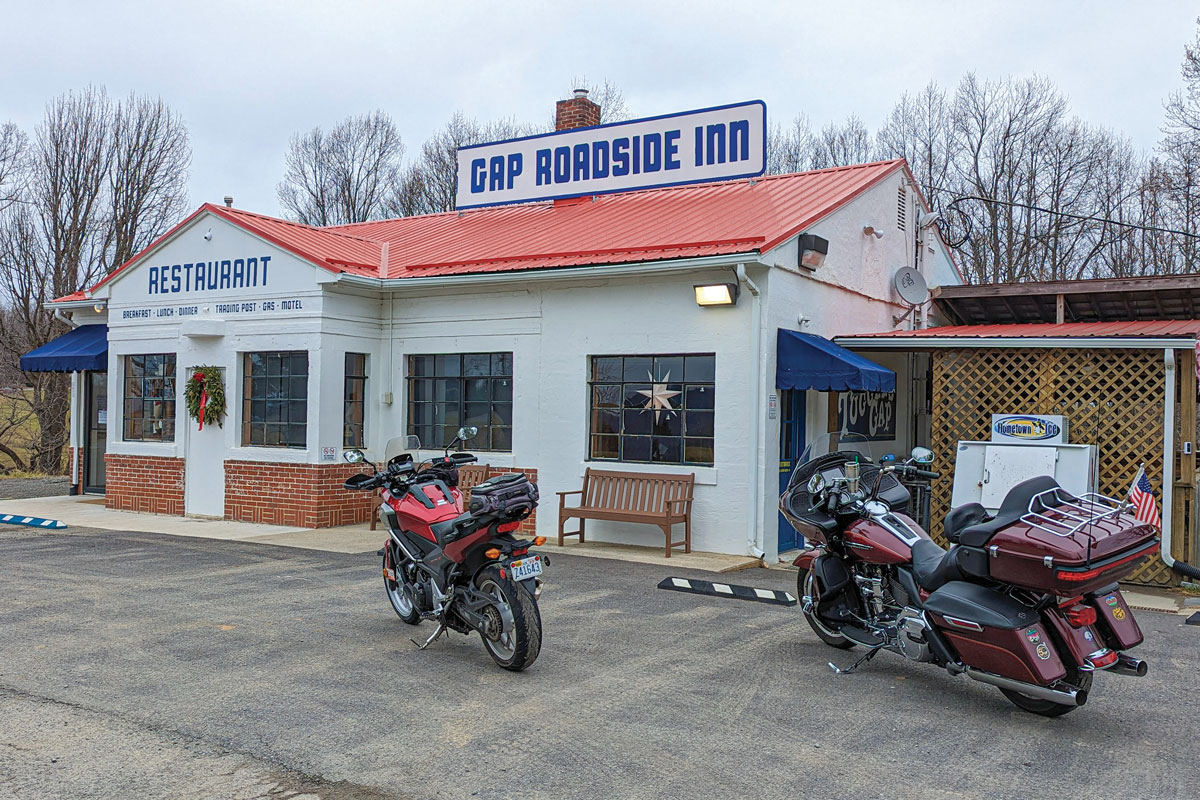
From there, you can continue on Route 8 back to Christiansburg, but parallel Route 615 is more fun — just trust me on this one.
If upscale lodging is in your budget, spend your night in Christiansburg at the town’s most impressive mansion, the Oaks Victorian Inn, walking distance (depending upon your level of inebriation) from the circa 2021 Iron Tree Brewery.
•••
For your final loop of the cloverleaf, head south to Riner and then catch Indian Valley Road to Willis through Floyd’s loveliest farmland. Continue southward past immense Buffalo Mountain. If you like to hike, you can ascend its bald knob for expansive, 360-dgree views. Keep going to Meadows of Dan and experience that quaint tourist village’s shops and restaurants, taking in the requisite visit at Mabry’s Mill, another good place for four-leaf-clover hunting.
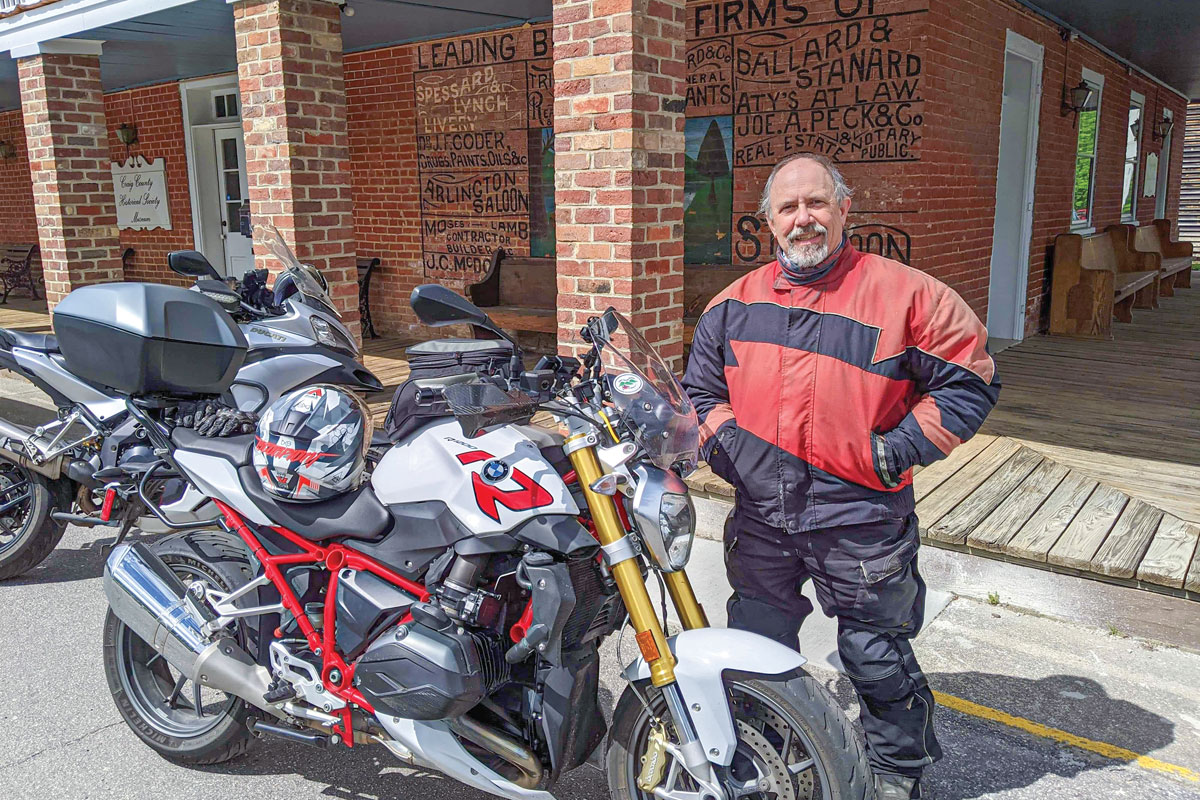
Take a short run along U.S. 58, Virginia’s longest road, westbound to Hillsville and grab a bowl of beef stew at the Hillsville Diner, dating back to 1946 and the oldest continuously operating streetcar diner in the state. Then wander inside the historic Carroll County Courthouse which in March 1912, hosted a horrific gunfight that went viral nationally until it was eclipsed by the sinking of the Titanic a month later.
Fifty bullets zinged across Judge Thornton Massie’s courtroom leaving him and five others dead and nine wounded, including the antagonist Floyd Allen, patriarch of the prominent and prosperous Allen family who was described as “overbearing, vindictive, high tempered, brutal, with no respect for the law and little or no respect for human life.” Allen was executed by electrocution for his role in the shooting.
Choose from several routes back to Christiansburg and complete your southwest loop, hopefully with shamrocks in hand for your scrapbook
Michael Abraham is the author of “Keepers of the Tradition” and seven other books, available at bikemike.squarespace.com.
Exploring Virginia’s Alleghany Highlands
The Alleghany Highlands of Virginia make for a great riding destination while touring Old Dominion, offering riders stunning natural beauty, quaint small towns and plenty of mountain backroads worth exploring.

A favorite stop is the Humpback Covered Bridge, just off U.S. 60 east of Covington. This arched wooden bridge first built in 1857 is Virginia’s oldest surviving covered bridge. A five-acre park with restrooms and picnic tables also make the bridge a great roadside rest stop.
Once back in the saddle, cruise through the charming streets of Covington before heading north from Covington on U.S. 220 to find a serene series of curves piercing the countryside. Make your next stop Falling Spring Falls, easily visible from the roadway. With its 80-foot cascade, it’s one of the largest falls in Virginia.
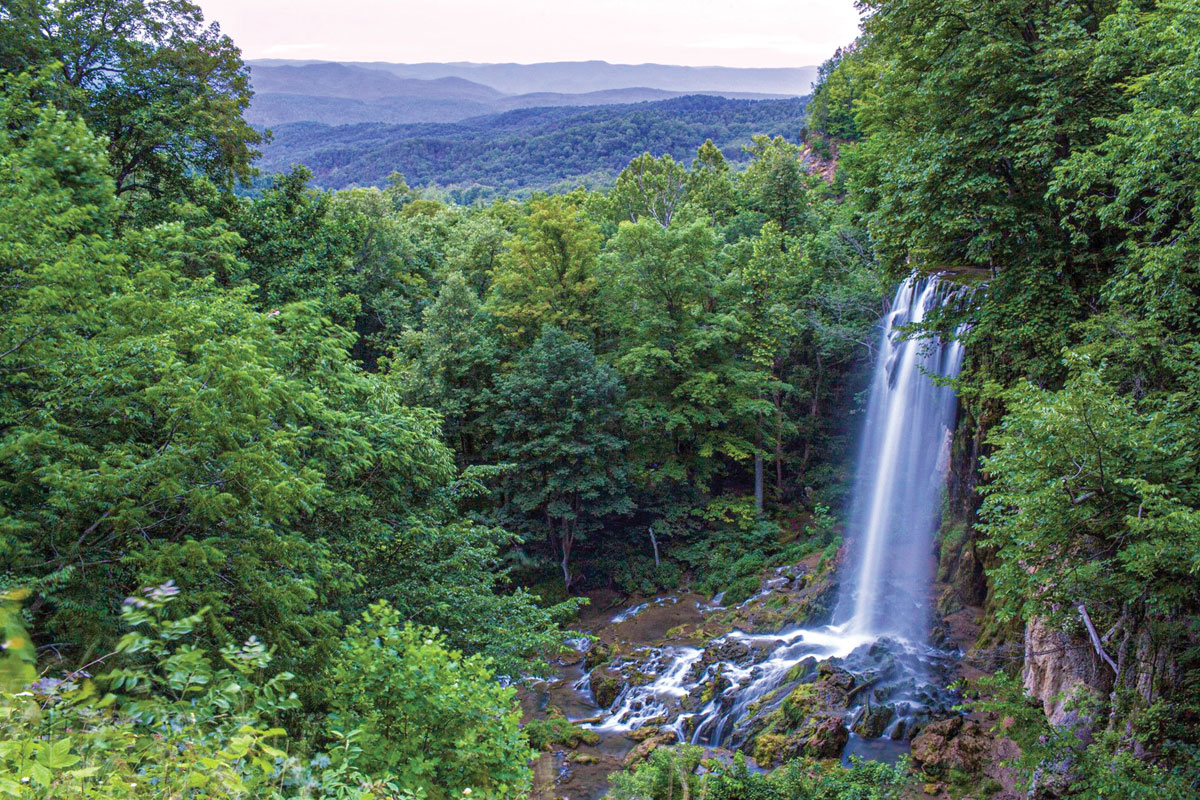
Railroad buffs will want to venture to the old C&O Depot in Covington and the C&O Heritage Center in Clifton Forge. The Heritage Center features restored rail cars, a signal tower and exhibits that tell the history and impact of the Chesapeake & Ohio Railroad.
For more travel destinations and route maps of scenic drives, check out visitalleghanyhighlands.com.
— Michael E. Gouge


